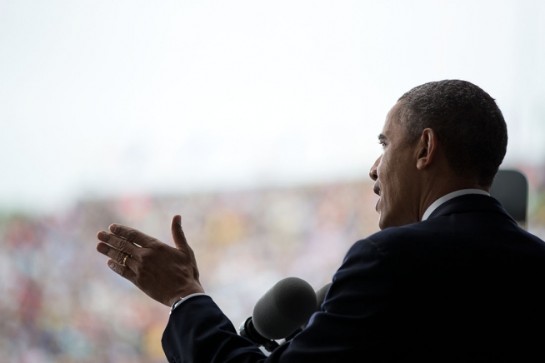
Taking a Closer Look at the Counterterrorism Partnerships Fund
In his West Point commencement address on Wednesday, President Obama outlined a broad foreign policy vision for a 21st century America, which included several key shifts in national security strategy.
After reaffirming that terrorism remains America’s greatest national security threat, the president stated, “A strategy that involves invading every country that harbors terrorist networks is naive and unsustainable … I believe we must shift our counterterrorism strategy … to more effectively partner with countries where terrorist networks seek a foothold.”
With this new strategy in mind, the president announced the Counterterrorism Partnerships Fund (CTPF).
CTPF is a proposed $5-billion-dollar resource fund which would provide flexibility to different counterterrorism missions abroad, including, but not limited to:
1. Training security forces in Yemen
2. Supporting a multinational force to keep peace in Somalia
3. Working with European allies to train a functional security force and border patrol in Libya
4. Facilitating French operations in Mali.
As ASP’s Thomas Campbell reported yesterday, the fund could also allow the U.S. to assist the Syrian cause without military intervention by supporting the counterterrorism efforts of neighboring countries such as Jordan, Lebanon, and Turkey. Importantly, President Obama also declared the efforts of the US to assure that “friends and allies in Europe and the Arab World” are also “contributing their fair share of support to the Syrian people.”
Though the fund is still theoretical, it appears as though CTPF has the potential both to support international counterterrorism efforts (Syria) and to combat internal terrorist threats though financial support and military training (Yemen).
If Congress assents, the $5 billion for the CTPF may well be added to the administration’s FY 2015 budget request, inside what’s known as the Overseas Contingency Operations request (the OCO is not considered part of the DOD’s core budget).
The concept of the CTPF is very much in keeping with Obama’s policy shifts toward a partnership-based national security strategy. The president acknowledged that the shifting and decentralized nature of contemporary terrorist threats necessitates “a strategy that matches [these threats]; one that expands our reach without sending forces that stretch our military thin.”
Pertinent details on how specifically CTPF would be implemented are vague at best. The recently released White House fact sheet on the FY2015 OCO request only gives a general proposal for CTPF’s mission, stating that the it will “allow us to pursue a more sustainable and effective approach to combating terrorism that focuses on empowering and enabling our partners around the globe.” It is not yet clear whose responsibility this will be. The White House has declined to comment on who would head the fund, although there are a finite number of logical choices (for example, building partner-nation capacity is a mission Special Operations Forces is “involved in daily,” according to Special Operations Command spokesman Ken McGraw). At this point, it is also unclear whether or not CTPF will support counterterrorism efforts abroad through primarily nonmilitary channels. Additionally, it is worth noting that there are several existing federal funds with similar counterterrorism goals to CTPF, though these funds–which include the 1206 Fund and the Global Security Contingency Fund–are not nearly as large.
On the macro level, CTPF is a promising concept. Shifting terror threats demand a sustainable and flexible national security strategy, which this fund endeavors to provide. However, efforts of this magnitude necessitate a more detailed plan of action—and appropriation of funds—before their validity can be assessed with any certainty.






[…] Taking a Closer Look at the Counterterrorism Partnerships Fund Victoria Burnside Clapp […]
[…] As President Obama declared during his May 28th speech at West Point, “the landscape has changed” for American foreign-policy going forward into the 21st century. At this critical juncture, it is important to examine al Qaeda’s newly fluid, decentralized structure and how the U.S. and its international partners can adapt to meet the challenge through initiatives like the proposed Counterterrorism Partnerships Fund. […]